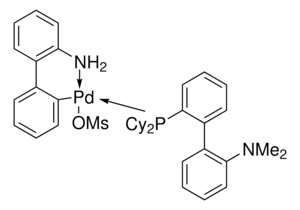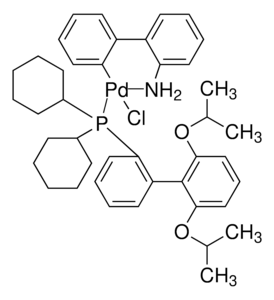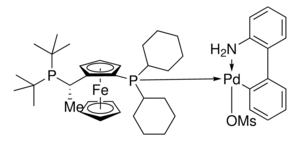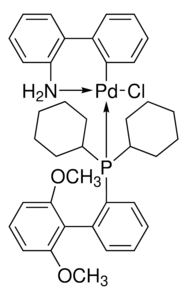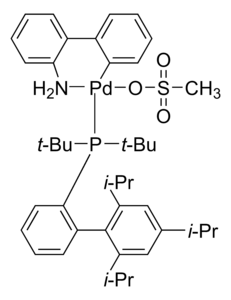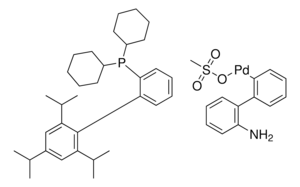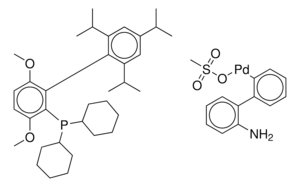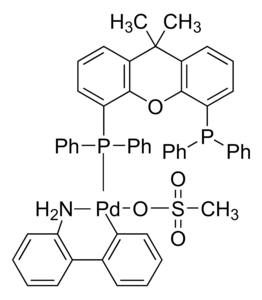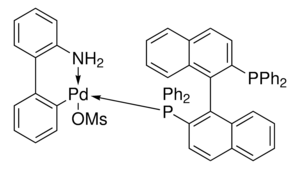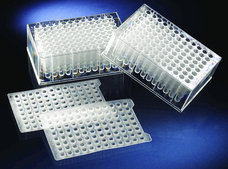KitAlysis™ C-N (Buchwald-Hartwig) High-Throughput Screening Kit
Materials Included in your KitAlysis™-CN-1KT High-Throughput Screening Kit
Contents in each of the 4 individually sealed Mylar (foil bags):
- 24 (12 x2) pre-weighed catalysts in glass vials loaded with stir bars, topped with cap mat.
The screening sets come pre-loaded with 1 µmol of catalyst in each vial according to the following design.
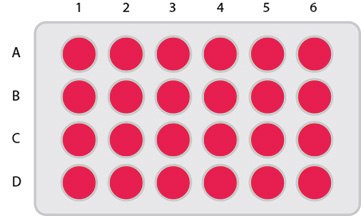
Figure 1.
| Description | Product No. | Vial |
|---|---|---|
| BrettPhos Pd G3 | 761605 | A1, C1 |
| CPhos Pd G3 | 763004 | A2, C2 |
| DavePhos Pd G3 | 804959 | A3, C3 |
| P(tBu3) Pd G2 | 756482 | A4, C4 |
| J009 Pd G3 | 747130 | A5, C5 |
| MorDalPhos Pd G3 | 792357 | A6, C6 |
| BINAP Pd G3 | 804967 | B1, D1 |
| RuPhos Pd G2 | 753246 | B2, D2 |
| SPhos Pd G2 | 753009 | B3, D3 |
| tBuXPhos Pd G3 | 762229 | B4, D4 |
| XantPhos Pd G3 | 763039 | B5, D5 |
| XPhos Pd G3 | 763381 | B6, D6 |
- Cesium Carbonate: ground and sieved in 2 pre-weighed vials with product labels and lids
- 2 empty reaction vials with lids
All contents in the foil bag are weighed, plated, packed, and sealed in a glove box under nitrogen.
Ampule Boxes:
- Dioxane: 10 x 2 mL of degassed, anhydrous Sure/Seal™
- DMAc: 10 x 2 mL of degassed, anhydrous Sure/Seal™
- NaOt-Bu Solution: 4 x 0.5 mL degassed anhydrous Sure/Seal™ 2 M THF solution
Internal Standard:
- Biphenyl (30 mg). To be added to the reaction during the work-up. Recipe for the work-up with the internal standard can be found within the hyperlinked screen types in the "Kit Design" section below.
KitAlysis™ 24-well Reaction Block Replacement Films-4EA
- Pack of 4 enables a new film to be used with each kit ensuring a tight, cross-contaminate-free seal every time.
Stir Bars-8 individually packed
- Fit perfectly into supplied vials to ensure proper stirring of substrate mixtures.
Kit Design
C-N (Buchwald-Hartwig) cross-coupling kit was designed to provide the best possible chance of success and is run with:
- 10 µmol aryl halide
- 15-20 µmol amine (primary, secondary), use 20 µmol if the material is not too precious
- 1 µmol catalyst per vial (1:1 Pd:Ligand); 12 in this system
- 30 µmol base (NaOt-Bu or Cs2Co3)
- 0.1 M solvent concentration (Dioxane or DMAc)
The C-N (Buchwald-Hartwig) cross-coupling kit allows the end user ultimate control and flexibility based upon their specific chemical system. For each kit, there are four possible screens that can be run based upon the substrates you provide:
- Two Solvents, Weak Base (Cs2CO3)
- Two Solvents, Strong Base (NaOt-Bu)
- One Solvent (Dioxane), Two Bases
- One Solvent (DMAc), Two Bases
The following guidelines can be used to determine your starting point:
| Substrate characteristics: | Screen Type: | Attempt: |
|---|---|---|
| base sensitive | C-N: Two Solvents, Weak Base | first |
| base tolerant | C-N: Two Solvents, Strong Base | first |
| base tolerant | C-N: Dioxane, Two Bases | second: based upon substrate solubility |
| base tolerant | C-N: DMAc, Two Bases | second: based upon substrate solubility |
| Not Sure | C-N: Two Solvents, Strong Base | first |
| Not Sure | C-N: Two Solvents, Weak Base | second |
The kit was purposefully designed to be modular, meaning that you can run 4 different kits, 4 identical kits, one of each, or any combination. All of the supplies can be mixed and matched to meet your needs.
Step-by-step user guide and an excel sheet for stock solution recipes that can be downloaded within each step-by-step user guide hyperlinked above.
Use of the Provided Tools
Multiple tools have been created to ensure your success with kit set up. Start with the more detailed guide to ensure you are comfortable with all of the steps before using the quick guides on the excel worksheet. Remember that while the technique is new, it is still organic chemistry and so the steps will seem easy once you try just one kit. It is just a new way of approaching something you are already very good at.
Detailed Set-Up User Guide:
Designed for the first time user and should be read completely before getting started. Best if used in conjunction with the video as not all steps are outlined in the video in great detail. This guide includes trouble-shooting tips, how-to’s for the Labware, and work-up recipes with procedures. Everything you need to set up a kit with confidence every time.
Excel Sheet:
Each sheet is designed to be used with the specific experimental design chosen by you depending upon the attributes of your substrates. The downloadable excel files are specific to the kit being run and can be found within each Step-by-Step User Guide. They have the following features:
- Calculations for substrate recipies depending upon the molecular weight of your substrates
- Quick directions for the more avid user
- Print button to allow you to take recipe to the lab
- Contain all info such that they can be can be saved as a pdf and appended to ELN for experimental information
如要继续阅读,请登录或创建帐户。
暂无帐户?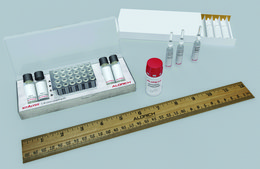
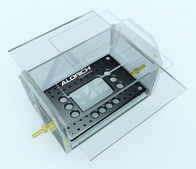
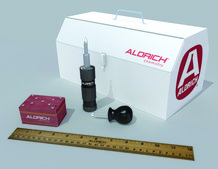
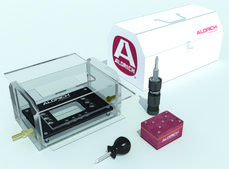
![氯[(三-TERT-三丁基膦)-2-(2-氨基联苯)]钯(II)](/deepweb/assets/sigmaaldrich/product/structures/100/957/42c5dad6-6197-4fa6-8481-3fe55f0291e9/300/42c5dad6-6197-4fa6-8481-3fe55f0291e9.png)
